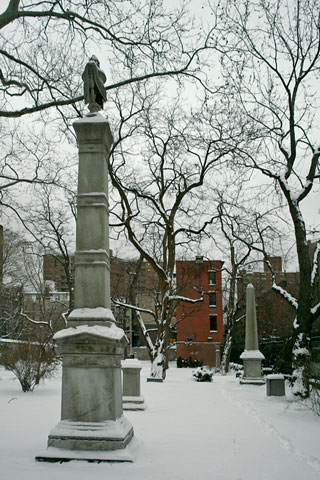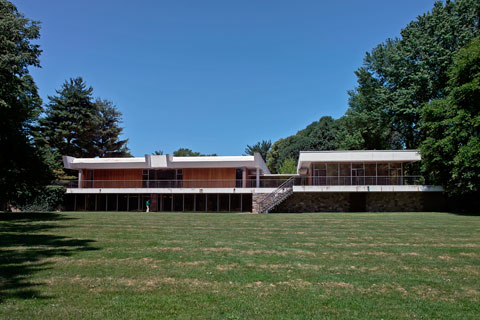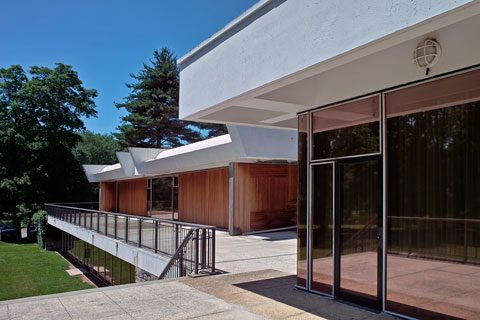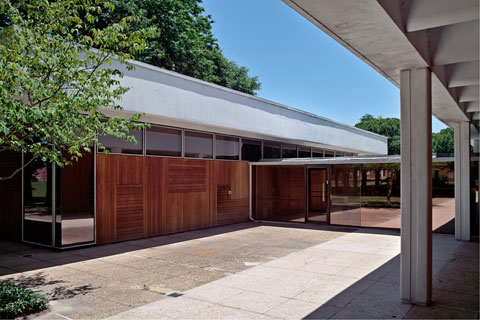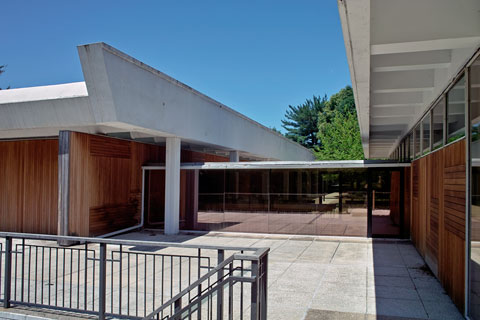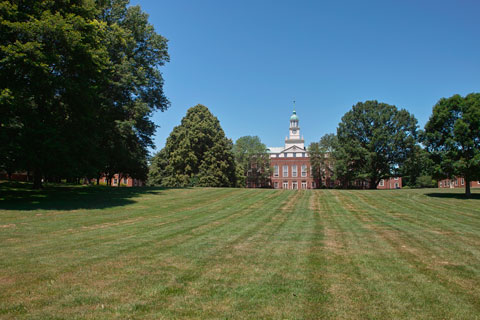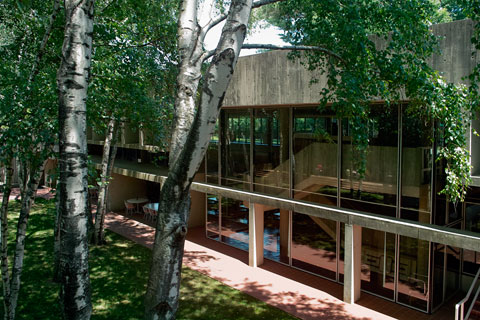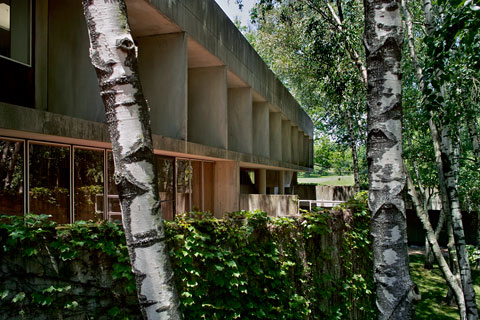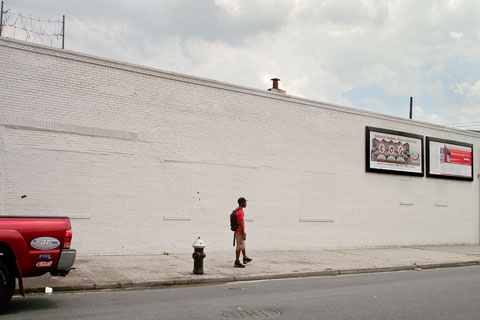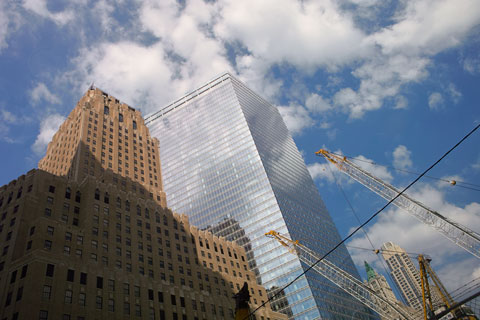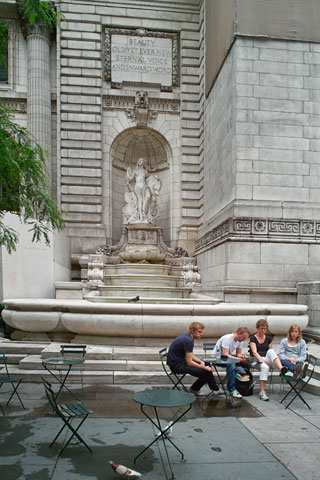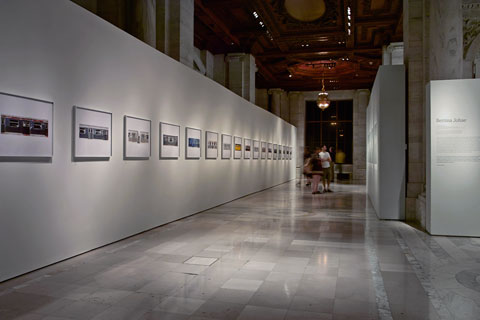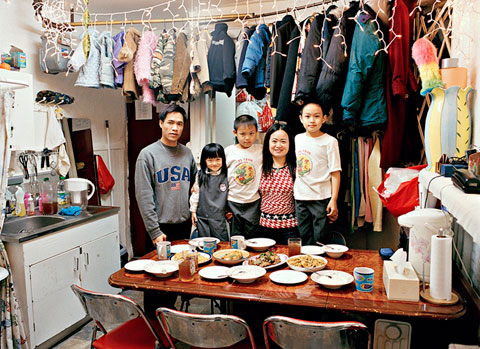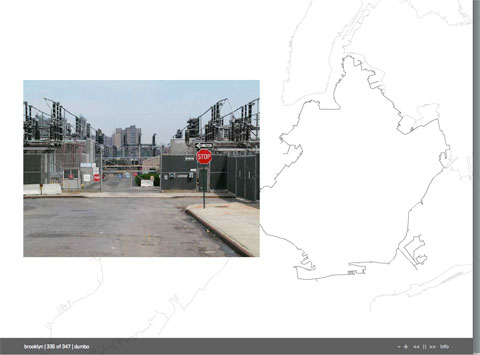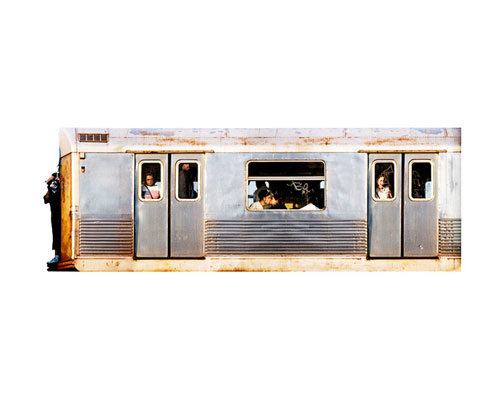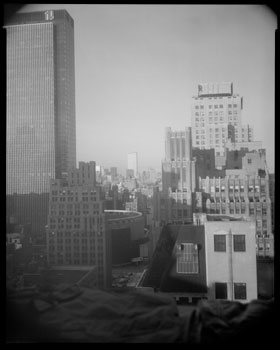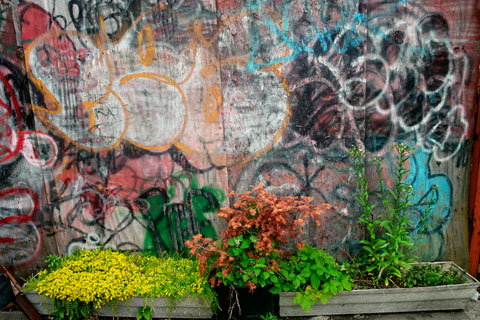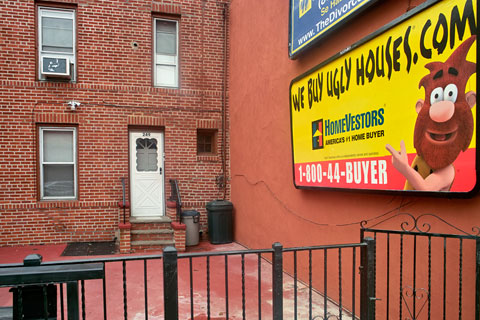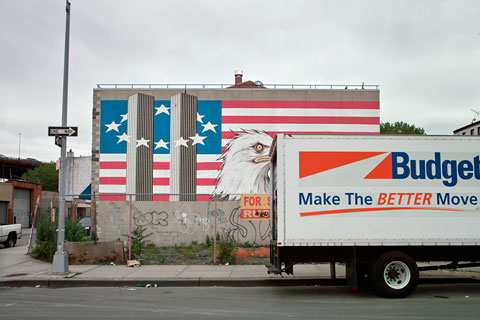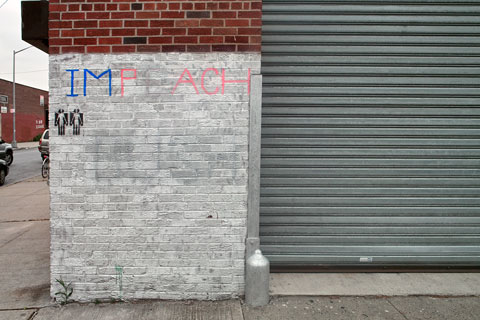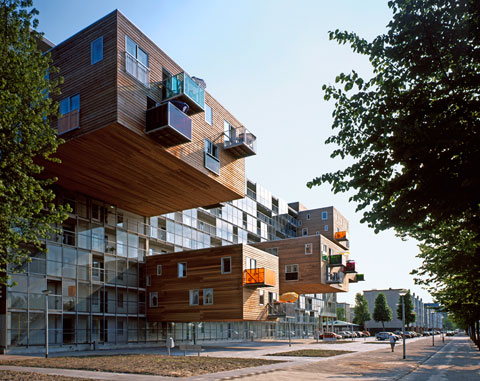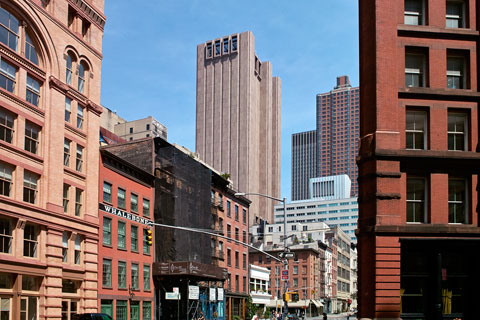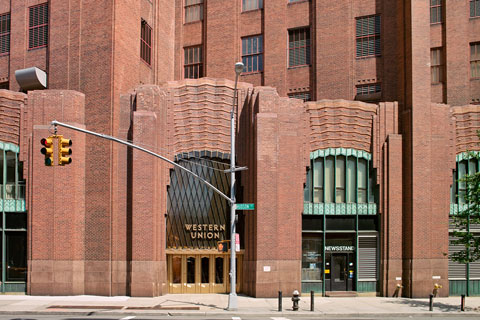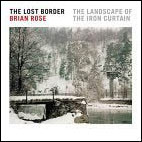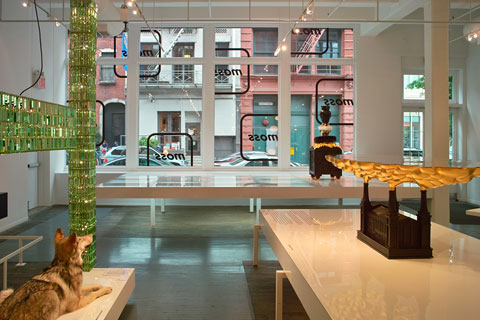 Robber Barons by Studio Job
Robber Barons by Studio Job--corporate greed in bronze (digital)
One of the primary purposes of this journal is to chart my course through the city--and elsewhere--and comment, where appropriate, on the things I see, neighborhoods I walk through, architecture I encounter, exhibits I visit. Sometimes I go out with my 4x5 view camera, and take snapshots with my digital camera on the side--a sort of comment on my own activity. Other times I just shoot off the cuff with the digital camera, going back, to some extent, to the 35mm street photography style of my student days.
The world I perambulate is becoming less and less a free space for visual commentary--meaning photography is forbidden. It's an insidious incremental crimping of the public domain, and there are now all sorts of places that are ambiguous public/private zones where various kinds of behavior and speech can be regulated.
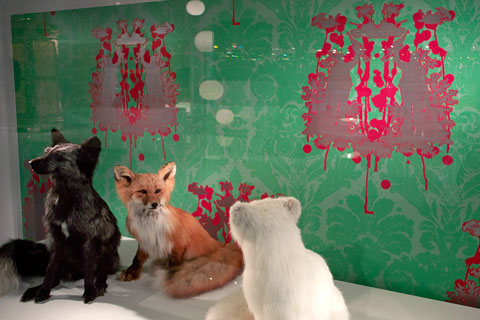
Taxidermy by
Melissa Dixson, wall paper by the Timorous Beasties (digital)
The pictures above was taken in Moss, an extraordinary design store in Soho that is as much gallery as shop. In fact, the current work on display featuring Dutch artist-designers was funded by the government of the Netherlands. Much of the work shown is political in nature, and like most political art, it is consigned to a gallery world populated primarily by supposedly high-minded wealthy individuals. The display above juxtaposes a grouping of idealized stuffed foxes cavorting against a wallpaper background created by the Timorous Beasties depicting "victory" in the Iraq war with bloody drips and splotches. To the victor the spoils.
After casually taking the preceding photos, I was informed by the shop staff that photography was not allowed. This being a private business, I quickly acceded to their demand, but I did ask the sales person, why? As is so often the case, she didn't actually know. There may, in fact, be a good reason--at least from the shop's point of view--but from my position as a blogger, a photographer, a (granted) self-appointed visual critic, my intentions have been stifled.
Now, on to the "public" library...
